A Midsummer Day’s Resonance is the unofficial 2005 translation of a 2002 freeware Japanese visual novel titled Natsu no Hi no Resonance. The original Japanese novel was created by Kagura Saitou. The English translation was led by Mr. Seung Park of Insani and submitted to the al|together 2005 visual novel translation festival. I am reviewing A Midsummer Day’s Resonance as part of my project to review nearly all of the 31 Japanese visual novels translated into English and contributed to the 2005, 2006, and 2008 al|together translation festivals. This is my 25th review of the project.
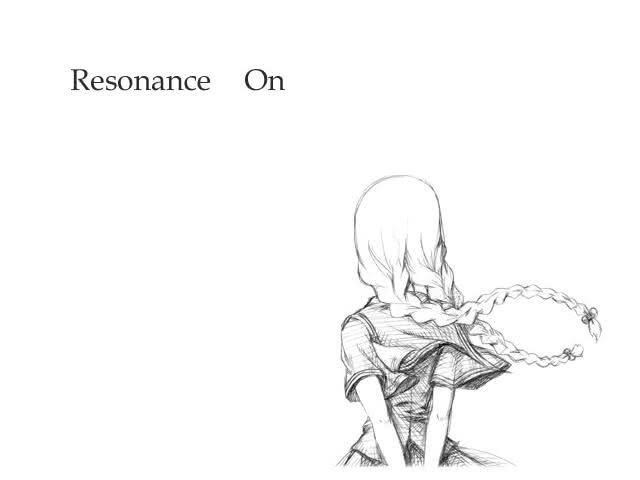
You can learn more about my al|together project by reading my project introduction article. That article includes a running list of our completed al|together reviews. I have a dedicated collection post with links to all of our al|together articles, including reviews, essays, and short posts.
A Midsummer Day’s Resonance is a short visual novel – medium-length by al|together standards, with no choices. It is narrated by Kasumi Kurasawa, a 15-year old first-year high school student, and it serves as her coming of age story, mixing a real-world setting with sci-fi elements and a first experience with unrequited love. The al|together 2005 introduction to the translation touted it as one of the most unique entries of the inaugural al|together festival, and for reasons I will discuss in my major spoiler-free review, it is one of the stand-out pieces of al|together.
A Midsummer Day’s Resonance Details
The English translation:
| Title | A Midsummer Day’s Resonance |
| Translator | Seung Park (Insani) |
| Release Date | (initial) May 15, 2005; (final) October 4, 2005 |
| Engine | ONScripter-EN |
| Official Websites | al|together 05; Insani |
Note on al|together 2005 page: If you intend to play Resonance, I recommend reading the novel before reading its al|together 2005 introduction. There is one line in the al|together 2005 intro that I think is a minor spoiler for someone reading through A Midsummer Day’s Resonance for the first time. I describe it as minor because the section lists many things present in the novel and this one item is heavily foreshadowed throughout the novel. Nevertheless, it is enough that I suggest reading the novel first (if you plan to read the novel) before reading Mr. Park’s short piece about it on al|together 2005. Note that the novel’s description on the Insani website does not include the minor spoiler language. I will quote parts of Mr. Park’s al|together 2005 intro without the language in question later in my review. Potential novel readers may take my recommendations under advisement.
The original Japanese novel:
| Title | Natsu no Hi no Resonance |
| Creator | Kagura Saitou |
| Release Date | (initial) July 1, 2002; (final) May 15, 2005 |
| Engine | NScripter |
| Website | Link (JP) |
| Download | Vector |
Notes on Kagura Saitou: Although Kagura is a woman’s name, the author reveals in the extra content (see the Easter Egg section immediately before the conclusion) that he is a man. I suspected this when I noted that the author’s site indicated that Kagura Saitou was a pen name, but I did not find confirmation until uncovering the novel’s extras menu post-completion.
Version history notes
Natsu no Hi no Resonance was first released on July 1, 2002. There were several additional releases in 2002, all with the version 1.00 marker. The final release, version 1.01, came on May 15, 2005, although it was first available for download on May 10, 2005. The al|together 2005 site lists the Japanese novel’s original release date of July 1, 2002, and Visual Novel Database notes that Insani’s translation was made available on May 15, 2005. At first, I wondered whether the final version of the English Midsummer Day’s Resonance was based on one of the 1.00 versions of the Japanese game. However, the English game’s 0.txt file, which contains the game’s script and programming info, reveals that this is not the case. The English translation received several edits after its initial release, and the final version of the English game, 1.01E, was published on October 4, 2005. The 0.txt file includes the original Japanese script, including a line noting the version number was 1.01. Thus, the English A Midsummer Day’s Resonance is based on the final 2005 release of Natsu no Hi no Resonance. However, it is worth noting that the version notes on the Japanese website for the novel suggest that all of the changes made subsequent to the initial 2002 release were minor and did not meaningfully change the content or structure of the story.
(This was a shorter research project than when I learned about the version history of A Winter’s Tale.)
Downloading and Installing A Midsummer Day’s Resonance
A Midsummer Day’s Resonance remains free to download and play from Insani and from a couple of additional sources.
- Insani (torrents)
- Kaisernet (direct)
- MEGA drive (direct)
There are original download links for Windows, Linux, and MacOS. I read the novel on Linux using the newest ONScripter-EN build (628 at the time I read it) by Galladite27 (see download links). If you can download torrents, consider downloading and seeding the official torrent from Insani. However, the Kaisernet site’s direct download is the fastest way to obtain a working copy of the novel.
Windows users should use the Windows installer but replace the ONScripter executable with the newer version post-install. (Note: I assume the original works generally but I have read reports from Windows users that some of the original executables have issues.)
Linux users can run the game natively by either running the new ONScripter-EN build in the Linux directory of the game or extracting the contents of the Windows installer and then running the Linux build for ONScripter-EN in the resulting directory. I personally recommend the Windows installer extraction approach, which I detailed in a guide.
The MacOS version released in 2005 does not work on modern Mac systems, but Insani is working on releasing re-mastered versions of its translations with modern MacOS builds. In the interim, Mac users can try to install and run the Windows version on top of WINE. See my guide to PlayOnLinux, which should apply generally to PlayOnMac. Note, however, that I do not have a system running MacOS and have not done any tests.
There are no special notes on running A Midsummer Day’s Resonance. The novel ran perfectly for me without any special configuration steps.
General overview of A Midsummer Day’s Resonance
Mr. Seung Park authored a simple introduction on the Insani website to the work he translated:
A delicate tale of coming-of-age, with cell phones, and friends in far-off places, and the first blush of unrequited love…
He wrote a more detailed description for the novel’s page on the official website of the al|together 2005 festival. There, Mr. Park described it as perhaps “the most atypical piece I’ve ever had the privilege of translating,” noting that the story brought together an unusual mix of components:
[A]ny story that can mix broken cellphones, [redacted], a female protagonist (yes, they exist! really!), and a delicate tale of coming-of-age has got to be worth something, right!?
The “[redacted]” covers the language I consider to be a minor spoiler for potential readers (see my Details section above for an explanation).
Mr. Park’s description is on target.
I will fill in a bit of context without going into too much detail.
The protagonist and sole view-point character of A Midsummer Day’s Resonance is Kasumi Kurasawa.

She begins the story – which takes place in the summer of 2002 – as a first-year high school student (note that this is the equivalent of a 10th grade student in the United States). She is 15 years of age. Kasumi is by her account an ordinary young lady. She describes not yet feeling like an adult and feeling trepidation about becoming an adult.
One day while riding her bike to school, a middle school student riding his bike collides with Kasumi. While Kasumi is unscathed, the same cannot be said for her school bag and phone – which are both run over by a passing car.
Kasumi’s phone, which was not only crushed but also soaked in her Capri Sun, is quite clearly broken. Kasumi was understandably surprised when her dead phone nevertheless made a strange noise and projected the image of another Japanese high school girl with whom she could communicate. Kasumi and that girl, Minamo Kawara, would become fast friends through their random, mysterious meeting. But it was Minamo’s friend, a dignified third-year high school student named Itsuki Mukai, who captured Kasumi’s admiration and heart.
A Midsummer Day’s Resonance is the story of Kasumi Kurasawa as she experiences a seemingly impossible series of events in the summer of her first year in high school, and experiences new feelings for the first time in a transformative period of her life.
A Midsummer Day’s Resonance Review
Below, I will review the different parts that make up A Midsummer Day’s Resonance.
Estimated reading time
Visual Novel Database readers reported that A Midsummer Day’s Resonance takes about one hour to read through the novel. This estimate is on the mark, give or take 10-15 minutes depending on reading speed. While it is a short novel in the grand scheme of things, it errs on the medium-long side by the standards of the al|together translations.
Game-play and structure
A Midsummer Day’s Resonance is a purely kinetic visual novel, meaning that there are no choices or player input beyond advancing the text. The story is broken into chapters, and completing the game once reveals a menu option to allow readers to start from any of the novel’s chapters. The story has 10 chapters along with a prologue and epilogue. Each of the chapters is separated by a visual title card, which I will discuss in the next section. Note that at the outset the prologue is ON, the epilogue is OFF, and chapter 10 is listed as 0 instead of 10.
Visual presentation
Before getting into character sprites and backgrounds, let us take a look at how text is presented. A Midsummer Day’s Resonance opted for confining text to a small text box at the bottom of the screen. The al|together projects originally written in NScripter and translated for al|together tended to be split between using a text box or having text run from the top of the screen to the bottom.
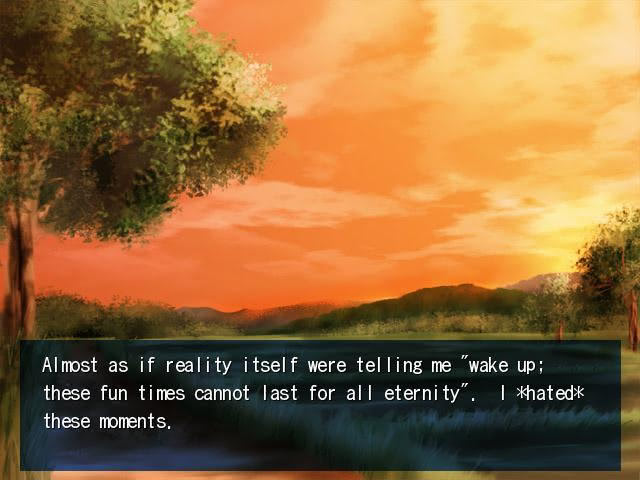
I prefer the approach we see in Resonance, especially since its backgrounds and sprites are worth highlighting. The text box is simple and lacks embellishment, but it gets the job done.
A Midsummer Day’s Resonance has three main types of visuals:
- Backgrounds
- Character sprites
- Chapter cards
The novel uses only four backgrounds (not counting a black screen in a few scenes), which is relatively sparse for a game of its length. Three of the backgrounds have 2-3 varieties each with different sky colors used to represent different times of day. I appreciate the soft natural colors in the backgrounds – which fit the narrative feel of the novel. However, the small number of backgrounds is disappointing given the number of scenes in Resonance, and it could have done with a few more.

The protagonist, Kasumi, does not have a character sprite – perhaps owed to the fact that we see the entire novel through her eyes. Both of her friends however, Minamo and Itsuki, have detailed sprites with a holographic field around them.
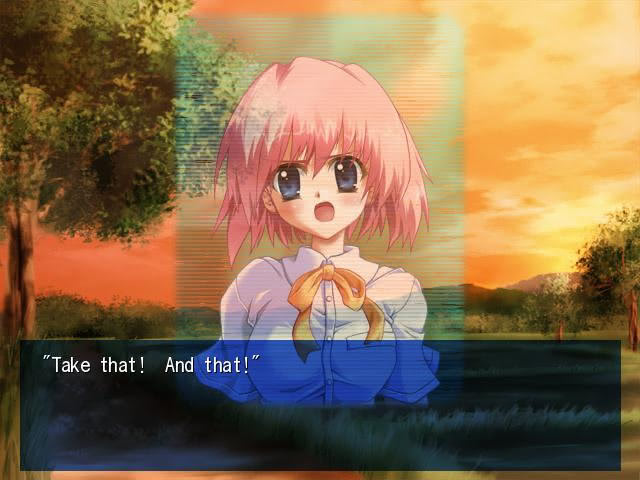
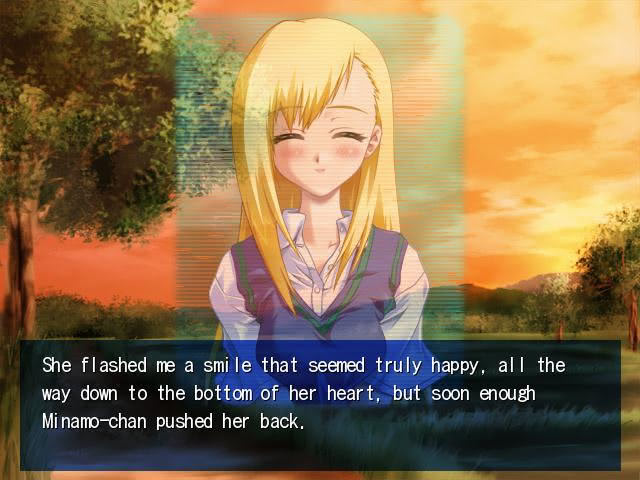
These are among the more detailed sprites of any of the al|together novels. They also perfectly capture the personality of the girls. Minamo is a friendly, energetic airhead. Itsuki is pretty and dignified, and her depiction makes Kasumi’s being drawn to her immediately understandable. Neither Minamo or Itsuki have alternative outfits. We do see some subtle changes in expression, but they never diverge far from their default posts and faces. I am not a fan of Minamo’s overall aesthetic – I think it is unduly cartoonish for the mood of the game, but I grant that it suits her archetype. Itsuki’s design, however, is solid and one of the best al|together novel portraits.
One neat thing that I cannot show you through screenshots (at least not easily) is that Minamo and Itsuki blink. I was surprised when I saw the blinking effect because that level of sprite animation is not common in the kinds of indie freeware projects that we have been reviewing. The blinking is a nice touch and adds some life to the two girls.
Finally, we have the chapter cards. The prologue, epilogue, and each of the 10 regular chapters begin with a white card with a sketch of an object or the main characters. See three examples below:


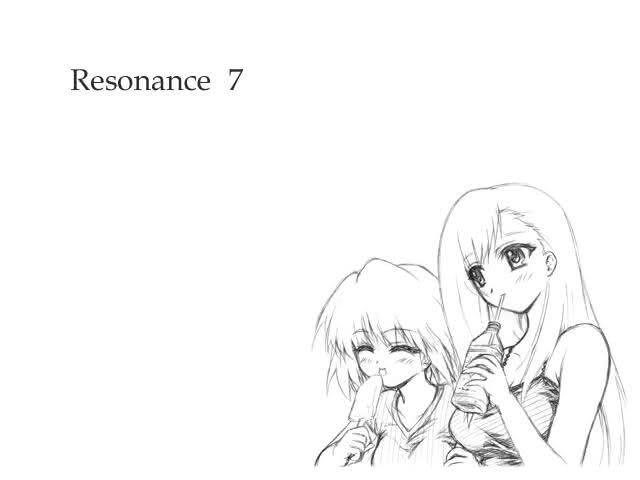
One thing I appreciated about the cards is that a number of them featured Kasumi, including a few cases in ways that illustrated something Kasumi described about her appearance. Kasumi is the view-point character, but she is not a self-insert character – by this I mean she has a clearly defined personality and worldview that she expresses mostly through her internal monologues. For this reason, it is helpful that the visual novel gives us an idea of what she looks like, and I will note that her design matches her personality.
The cards are all well-designed as a general matter with a few of the cards featuring Kasumi being the stand-outs. The visual style of the cards reminded me greatly of Red Shift, another novel separated into chapters highlighted by colorless sketches.
(Note: In the Extra content, which I discuss later in the Easter Eggs section of this review, the author discusses his efforts to reduce the size of the images in the novel. One casualty was color in the chapter cards – but I noted that I appreciated the aesthetic of the cards before I learned that the design was apparently a compromise. I will add that there is a touch of color in the epilogue card. I suspect that the relatively limited background selection was also part of an effort to reduce the size of the novel.)
Music and sound effects
A Midsummer Day’s Resonance has five in-game tracks and one additional track in the Extra content. The music is typical fare for al|together, and I recognized most of the songs from prior review (note that although Resonance is one of our last al|together reviews, the Japanese game was originally published in 2002, making it one of the oldest games in the collection). All of the tracks with one exception were suitable background music, although they were not as effective as similar music sets in other games (see Plain Song and The Letter for good examples). One of the songs, which first appears in chapter 2, had some unpleasant effects, but it only made two appearances overall.
Resonance’s most memorable sound is the hard-to-describe loud notice that occurs every time Kasumi’s broken phone makes a connection to her distant friends. It leaves a strong impression. The volume is reasonable, unlike the alarm which wakes up a different Kasumi in the similarly named Midsummer Haze, which was my immediately previous al|together review, but it can be startling if you have the volume too high.
One interesting thing I noticed is that there are some parts of scenes where there is no music at all. In one instance I wondered whether I was having one of the sound issues that haunted some of my earlier al|together reviews. However, it seems that there are stretches with no music or sound effects. This is a slight negative.
Translation quality
As always, I note that my translation assessment only covers how the novel reads in English and any interesting or wrong notes that are immediately obvious as translation decisions. I do not speak Japanese, so it goes without saying that I cannot assess the translation against the original Japanese text of Natsu no Hi no Resonance.
The translation was handled principally by Mr. Seung Park, the lead translator for Insani, which was the most prolific contributor to the al|together festivals (and the sole contributor in 2008). Like all of Mr. Park’s translations, Resonance reads excellently in English with no glaring issues or points where I was left scratching my head. The overall quality of the work marks it as one of the best-reading translations of al|together. For his part, Mr. Park credited the original creator, Kagura Saitou for writing a terrific Japanese script and he highlighted some unusual aspects of it from his perspective as a translator:
[T]his piece proved to be an interesting challenge due to the fact that it was told with a very distinctly feminine voice – a far cry from the more nondescript or more masculine voices that generally hold the field in this genre of games.
It is a credit to Mr. Park’s translation work that the “distinctively feminine voice” of the protagonist, Kasumi Kurasawa, comes through clearly. I noted previously that every second of Resonance is seen through Kasumi’s eyes, and every word is either her internal narration or dialogue between her and other characters. It is worth noting that Mr. Park was also the lead translator for al|together 2006’s Flood of Tears, which I praised for having an excellent female main character (albeit not viewpoint character) in Hina Kawase. One reason Hina is a great character is that she talks and thinks in a natural way for a girl of her age. The same is true of Kasumi. Mr. Park’s note on the “nondescript or more masculine voices” that were (and perhaps still are) common in visual novels is also worth considering. For example, I faulted al|together 2006’s horror visual novel Night of the Forget-Me-Nots because its protagonist, a young lady in high school, was written with little-to-no femininity at all, such that it would be easy to miss that the story was being narrated by a girl if not for a few direct references.
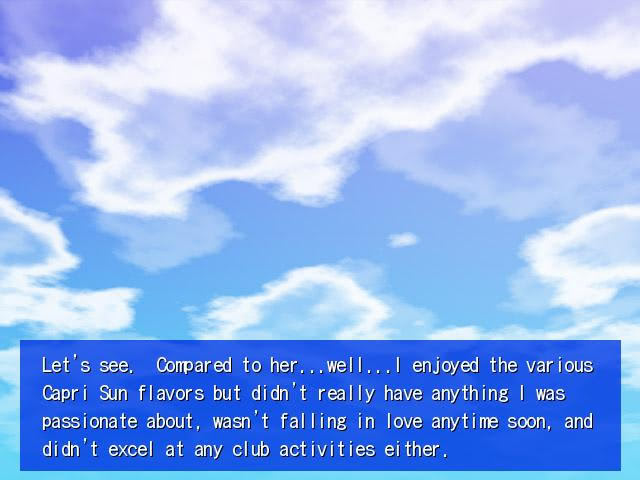
One interesting note is the English version’s stating that Kasumi’s favorite drink is Capri Sun. This is significant since it is Capri Sun that soaks her already crushed phone after her bag is run over by a car. I am curious whether the Japanese game had Kasumi talk about a different drink that would not be familiar to most English-speaking readers or if Capri Sun is (or was) popular in Japan. In any event – the point comes across well in the translation.
On the whole, Resonance reads well in a way that it is easy to enjoy the story and consider its messages without thinking about it being a translation. But how good is the story? Let us assess.
Writing and story quality
The term coming of age story is as oft-overused as the term for a slice of life. But it applies cleanly to A Midsummer Day’s Resonance. Our protagonist and narrator, Kasumi Kurasawa, is a 15-year old on the cusp of turning 16 (she states that her birthday is on July 21 and there are several in-game references to events taking place shortly before July 21). It is Kasumi’s story from beginning to end. Specifically, it is the story of Kasumi’s youth, her apprehension about becoming an adult, and the things she gains and loses over the course of a few weeks before and after she turns 16.

One thing that makes Kasumi an interesting character is that she is written in a down-to-Earth way. She is introspective for a high school girl (perhaps somewhat to her detriment), and that leads her to some interesting insights and ways of seeing her place in the world. She is able to be articulate without borrowing the voice of someone older and wiser – which is very important in light of the novel’s particular focus on the relationship between youth, loss, and growing up. It can be difficult to strike the balance of writing a young character in an interesting way while writing the young character as a young character. One of my critiques of al|together 2006’s Collage, which is otherwise one of the elite novels of the set, was that a certain six-year old character in the cast sounded more like a wise oracle than a child.
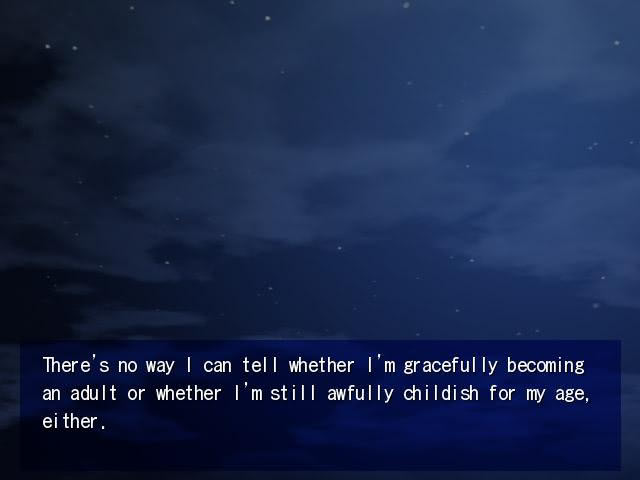
Kasumi has an earnestness about her that distinguishes her from many other coming of age protagonists in Japanese media (especially boys). Kasumi betrays a distinct sense of malaise when we first meet her, and there is a tinge of melancholy in her musings on growing up and feeling left behind by her childhood friends. But all the while, Kasumi is never entirely disaffected. She embraces the idea that interesting things can happen in her life and is open to changing her perspective when circumstances prompt her.

It is because of what we learn about Kasumi through her own thoughts that her reaction to the hologram of another Japanese high school girl – Minamo Kawara – emerging from her phone is believable. So too is Kasumi’s first admiring and then falling for Itsuki Mukai after their introduction is facilitated by Minamo. The author put careful thought into the types of personalities that would have to be involved for Kasumi to ease into and make the most of these unbelievable chance encounters.
The novel ultimately has a clear arc. Kasumi begins by telling us about the person she is before a certain unbelievable event in her life. We see how she responds to the unbelievable event, develops romantic feelings for the first time, and grasps and loses something all within the course of a couple peculiar weeks during the summer of her first year in high school. The story concludes with a with Kasumi reflecting on the experience shortly after the fact, considering what she gained, what she lost, and how that all relates to the process of leaving childhood behind and becoming an adult.
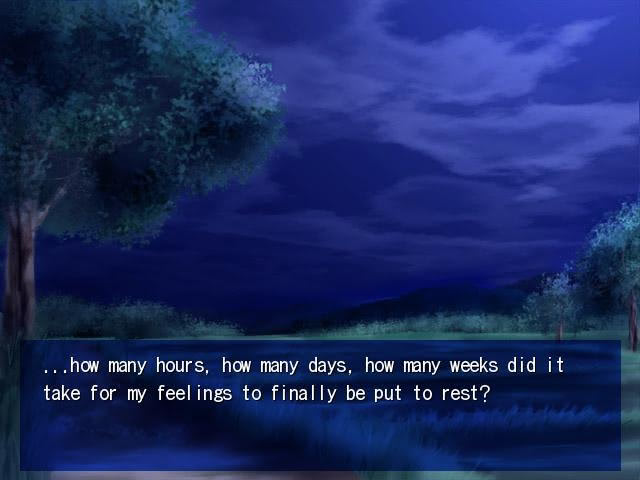
(Without going into the matter too deeply here, I will state my view that, despite its set-up, A Midsummer Day’s resonance is not an especially sentimental piece. This mildly and pleasantly surprised me given the novel’s clear focus on youth, loss, and growing up. Unlike many novels of the type, it is not written in a way that expects a specific emotional reaction from readers.)
While several characters are referenced or having speaking lines, the only characters other than Kasumi who receive significant screen-time are Minamo and Itsuki, the two school-girls who Kasumi’s broken phone connects her to. Consistent with the game being Kasumi’s story, we only see Minamo and Itsuki through Kasumi’s eyes and only see their interactions with Kasumi and with each other when they are talking to Kasumi. Our entire understanding of Minamo and Itsuki is tied to how they interact with Kasumi and Kasumi’s internal assessment of them.
Minamo fits the archetype of a bubbly, energetic, and air-headed girl. Her simple personality is well-thought out to the extent that she is precisely the sort of person Kasumi would have had to connect to via broken phone hologram to establish a connection. Kasumi is shy and reserved outside of her internal monologues. Minamo breaks through Kasumi’s reservedness by being more interested in befriending Kasumi than trying to get to the bottom of why her phone was projecting a hologram of a schoolgirl from the Japanese country-side.
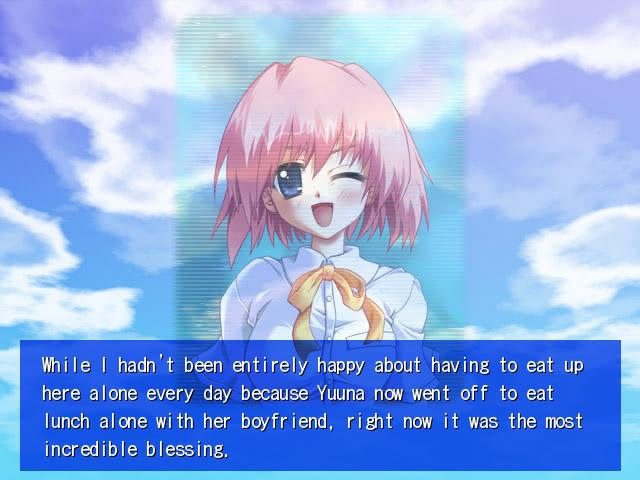
Unfortunately, Minamo does not exhibit any depth beyond her simple first expression. Once she serves her purpose in easing Kasumi into a long distance friendship and facilitating Kasumi’s interactions with Itsuki, her relentless hyper-activity and lack of nuance becomes a bit grating, granting a few good comedic lines. I was amused to find after reading the main story and forming my conclusion of Minamo that the author lamp-shaded my assessment in the extra content section (see the Easter Egg section further down in the review).
Itsuki is Minamo’s neighbor and best friend, and she ultimately meets Kasumi because Minamo wanted to prove that she really did talk to a hologram emerging from her broken phone. Itsuki is almost Minamo’s opposite. Tall, reserved, and traditionally pretty – but also friendly. Our view of Itsuki is colored by Kasumi’s first admiring her and then falling for her, but we can see beyond Kasumi’s strong feelings that Itsuki is in fact a kind and straight-forward young woman who, like Minamo, is interested in befriending Kasumi.
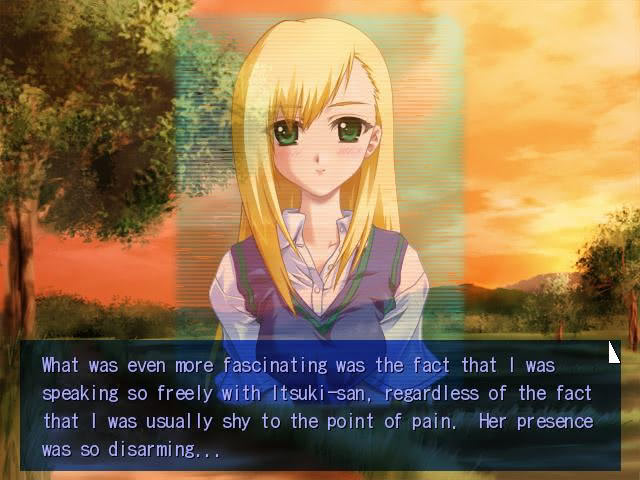
The game subtly makes clear that having Minamo around is what allows Kasumi to ease into being able to talk to Itsuki normally. While I prefer Itsuki to Minamo as a character, her character shares the similar issue of not developing much beyond what we see in her first appearance – although our limited perspective (Kasumi’s) and the brief amount of time covered by the novel make this understandable in Itsuki’s case.
I will refrain from saying too much about the sci-fi plot of Resonance other than to note that like other al|together translations with sci-fi elements — such as the excellent Shooting Star Hill and Flood of Tears from al|together 2006 and The Letter from 2008 — the sci-fi elements are neither the point of Resonancenor ultimately responsible for the final resolution of Kasumi’s feelings. While the novel does not throw all of its cards on the table until the very end, it does foreshadow the true nature of the strange connection between Kasumi and her distant friends – notably in one instance in the middle of the story when the slightly future Kasumi reflects back on how she understood things when they were happening. The novel makes more of an effort to explain the sci-fi aspect of its story than do Shooting Star Hill and Flood of Tears, but the surface explanation would hardly suffice if the sci-fi plot was more than a vehicle for telling the simple story of a certain time in the life of a high school girl.
For all of its quirks and points where one can see that it was the author’s first (and sadly, only) visual novel effort, Resonance succeeds on the strength of its protagonist and its determination, even with holograms emerging from broken phones in an otherwise real-world rural Japan setting, to stay solidly within itself and focus on telling a quaint short story of gaining things, losing things, and growing up. In that sense, while the summaries provided by Mr. Park for Insani and al|together 2005 are accurate, the hearts of the story and Kasumi Kurasawa are simpler than a broad summary of the events that make up the story.
Menu notes
The start menu and the in-game menu are simple but unique for the al|together novels.


After completing Resonance, the player unlocks three new menu items: Shortcut, Gallery, and Music. Shortcut is the most useful menu item. From here, one can start from the prologue, epilogue, or any of the novel’s 10 chapters (this makes saving during game-play for any reason other than bookmarking a specific position unnecessary). The gallery displays all of the chapter card images in one place. The music section is a traditional jukebox, but not too inspiring in Resonance’s case given the novel’s limited soundtrack.
Easter eggs
A 2006 The author’s website page for the novel appears to contain a reference to an Easter Egg which can be triggered after completing the game. However, note that I am translating this section of the page with Google Translate, so there may be missing nuance or context:
If you enter the passcode displayed after the ending somewhere in this software, you can enter the secret bonus mode. Entering the passcode is not from the numeric keys on the keyboard.
Kagura Saitou (via Google Translate)
I assumed that this had something to do with the fact that the numbers 0374 appear on the bottom right corner of the screen after the end credits. My hunch turned out to be correct, and the author’s hint about not pressing 0374 on the keyboard is also helpful. The extras in this case are worthwhile. They include additional concept sketches, all variations of character portraits, and extra content from the three main girls, and insight into the author and his thinking. I encourage you to rack your brain to figure out the solution to inputting the code just like I did, but if you find yourself stuck and ready to give up, you can read the solution in my Gitea repository (also see the solution published as a ROT13 code in a 2007 review of the novel on Sleepless Nights).
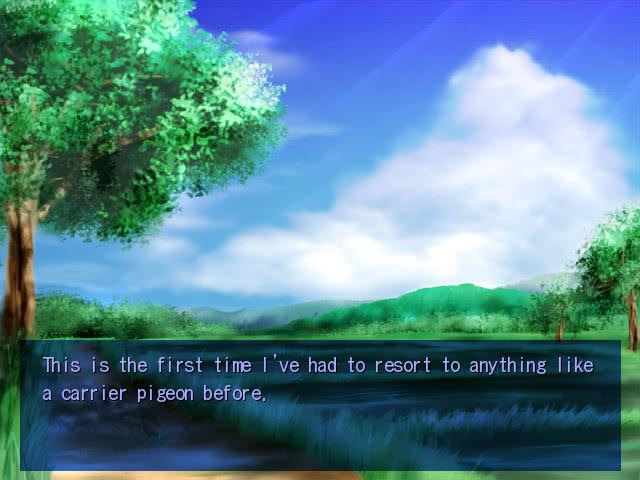
(Note: I confess that I would have likely missed the Easter Egg content entirely had I not taken the time to run the novel’s original Japanese site through machine translation, so I consider my reporting it here to be a great public service similar to the one I provided for I, Too, Saw Dreams Through Air.)
All of the ONScripter al|together translations (note a majority of the translations are written in ONScripter) have what is called a 0.txt file. The 0.txt file contains the novel’s script and cues for visuals, music, and other aspects of the programming. It should go without saying that you do not want to modify the 0.txt file. The file for A Midsummer Day’s Resonance has a couple of Easter eggs in it. The beginning features a dialogue written by the creator between Itsuki and Minamo, the two friends of the protagonist. In the dialogue, they humorously discuss what a visual novel is with references to in-game events. The conclusion of the 0.txt file contains the developer’s statement about the process of creating the novel. You can find these slices of extra content at the beginning and end of the 0.txt file respectively.
Final assessment
While I had noted that Mr. Park singled out A Midsummer Day’s Resonance for praise in al|together 2005 and that it had relatively solid scores (by al|together standards) from random reviewers on Visual Novel Database, I was not quite sure what to expect going in mostly blind. Despite some shortcomings in its limited selection of background visuals and music, minor complaints regarding the second and third main characters, and some rough edges in the story, Resonance is in one of the best pieces of the 31 submitted to the al|together festivals.
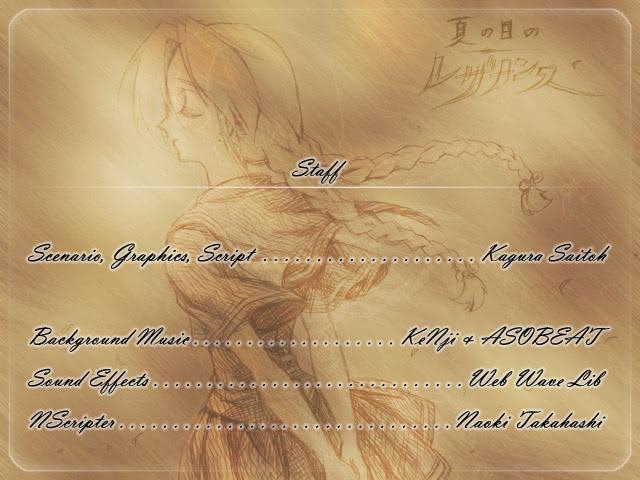
Kasumi, a perfectly ordinary girl, is one of the stand-out protagonists of al|together, written articulately without losing the sentiments and sensibilities of her a girl her age. While she ultimately begins Resonance as an ordinary 15-year-old girl and ends it as an ordinary 16 year-old-girl, her character arc, as simple as it is notwithstanding a certain extraordinary event, is one of the best-defined of any al|together character. A Midsummer Day’s Resonance makes for an easy novel to recommend as a general matter, with only the caveat that it is not interactive. I tip my hat to Kagura Saitou for his creation and Mr. Seung Park and Insani for the translation.